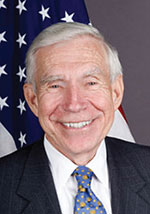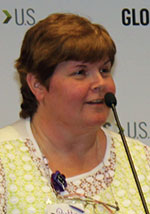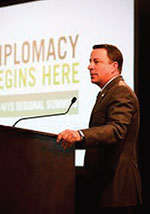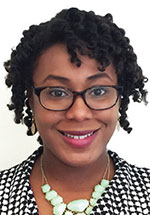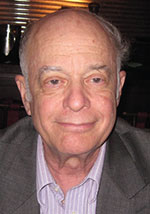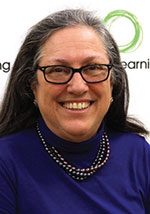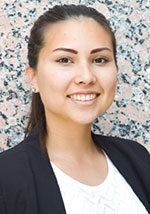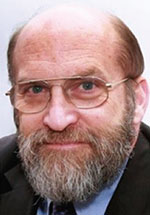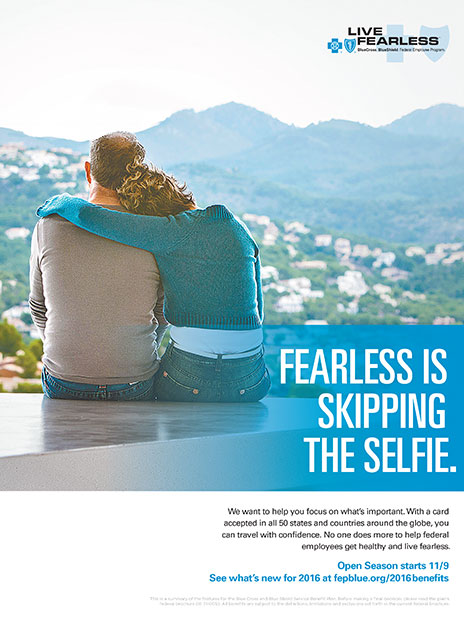Soft Power, High Impact
America’s premier exchange program is 75 this year. In this compilation of personal experiences, participants offer insight into its unique effectiveness.
BY ROBERT ZIMMERMAN
One of U.S. foreign policy’s ground-breaking soft power initiatives is celebrating its 75th anniversary this year: the U.S. Department of State’s International Visitor Leadership Program.
Though it is not widely known and operates quietly, with a current budget of $90 million, the impact of the IVLP is significant. The program has helped launch the careers of many world leaders, as well as civic leaders, while strengthening ties with our allies and advancing U.S. interests. As America’s leadership debates the balance between hard and soft power, this time-honored and proven initiative demonstrates how the United States can show its best face to the world while achieving its goals peacefully.
About 5,000 foreign nationals visit the United States annually through the IVLP. Some 345 former and current heads of government have visited under the aegis of the program. Their ranks include Margaret Thatcher, Tony Blair, Indira Gandhi, Nicholas Sarkozy and Nobel Laureate Oscar Arias, all of whom participated early in their careers. Two current Latin American presidents, Brazil’s Dilma Roussef and Uruguay’s Tabare Vazquez, are also among the 200,000 foreign alumni from 190 countries who have taken part in the program over the past 75 years.
International exchange alumni are prominent in a host of fields. Many business and economics professionals who participated in the IVLP have become economic or finance ministers in their home countries. IVLP also generates business for the United States.
The impact of international exchanges has not escaped the attention of our senior policymakers. In testimony to Congress in 2003, then-State Department Under Secretary for Public Diplomacy and Public Affairs Charlotte Beers noted that “50 percent of the leaders of the global coalition against terrorism had been International Visitors.”
“Simple exchanges can break down walls between us, for when people come together and speak to one another and share a common experience, then their common humanity is revealed,” notes President Barack Obama. One of U/S Beers’ successors, Judith McHale, called exchanges “the single most important and valuable thing we do.”
Why International Exchanges?
One key goal of any government-managed exchange program is the casting of the host country in the best possible light in the minds of a foreign audience. Another objective is sharing knowledge that overseas visitors can use when they return home as well as facilitating an exchange of ideas. Federal agencies have for decades invited foreign scholars, experts, military personnel and researchers to our country to meet American counterparts in fields from museum management and public health development, to international trade and foreign policy, to name but a few.
Since 1940, the United States has invited these would-be leaders from around the world on short-term visits under the auspices of the International Visitor and Leadership Program. U.S. embassy officials identify and nominate candidates whose careers are still unfolding but who have already demonstrated the potential to become influential at home.
Visitors take part in programs that last from a few days to three weeks. While Washington, D.C., is often their first stop, nearly all participants go on to visit three to four cities across the United States. The program operates on the premise that foreign participants will gain a realistic picture of the United States by spending time there. Visitors see firsthand how American society and politics “work,” leading to understanding if not admiration.
Most International Visitor Leadership Program funding ultimately filters back to the United States, to be spent on services provided by U.S. firms. For example, the 1978 Fly America Act (Public Law 95–473) has been interpreted to require the use of U.S. carriers where possible. The entire program takes place in the United States, to the benefit of its hotels, transportation companies and contractors. Many participants bring extra funds with them to purchase gifts for families and friends at home. Some even extend their stay to see more of the country on their own.
The IVLP’s “Gold Star” program brings alumni who have made a significant impact in their home communities back to the United States to share their insights and to discuss new strategies with their American counterparts.
I reached out to the network of individuals and organizations that made the International Visitor Leadership Program a global success in search of a few stories to share, and heard from many wonderful people, far more than we could include here. The following selection of personal accounts by participants offers abundant testimony to the program’s vitality and effectiveness.
Finding Common Ground
BY SAID ELKAOUKAJI
The U.S. government has a large number of people-to-people programs, but from the perspective of this son of Morocco, I know of none that has touched the lives of me and my fellow countrymen more than the International Visitor Leadership Program. Indeed, my life was turned around for the better, thanks to the invitation the U.S. State Department extended to me to participate in this initiative in 2004.
I have been a teacher for more than 25 years, and have focused on the underprivileged youth of my native land since 1994. From the beginning, I made it my business to be as close to my students as possible. An effective teacher must view his or her students as individuals and begin the relationship with a cardinal rule: never treat them as empty vessels to be filled with information. As I see it, pedagogy mandates that we take on the roles of social workers, psychologists, mentors and tutors.
Unfortunately, the need to wear “more than one hat” at a time in the classroom is sometimes lost on my colleagues. Many complain about overcrowded classes; students of varying ability in the same classroom; and the link between low family income and student performance.
In the United States, I learned that the techniques I practice are integrated into the fabric of teaching. On my return to Morocco, I tried to implement the excellent work I saw in the course of my travels to several U.S. cities. The projects I work on focus on three scourges that continue to plague communities in Morocco: fundamentalism and intolerance, drug use and prostitution.
I helped launch Morocco’s Access Micro-Scholarship Program, an initiative offering English-language instruction to underprivileged youth in more than 90 counties. We started with only 17 pupils and now have many more, thanks to continued U.S. State Department engagement.
My IVLP experience motivated me to organize a trip for 11 students and two teachers from Dakhla, a city of about 55,000 located in the Moroccan Sahara (the region referred to abroad as the “Western Sahara”). The group spent a week in Casablanca on a program that included visits to sites that showcase the best of our diversity and tolerance. We took them to the American Cultural Center, the American Language Center and the Moroccan Jewish Museum. Our students were surprised to learn of the Jewish presence in our land, which predates the Muslim conquest.
Dear to my heart are the projects I created that bring Moroccan and American students together. My goal here is to bridge the gaps and find common ground between our peoples. All of my initiatives begin with a statement of principles and objectives, and end with an evaluation—a technique I saw practiced with great effect in the United States.
I recently had the good fortune to be recognized by the State Department as a “Gold Star” IVLP alumnus. This meant a second trip to the United States in 2015, where I learned about the technology now available to enable teachers and students to use social media and Skype as effective learning tools. I was particularly pleased to learn that volunteerism lacks a mandatory age of retirement. My hosts in Nebraska demonstrated that hospitality to guests is not an exclusively Moroccan cultural trait, but part of the American social fabric, as well.
I am committed to sharing my Gold Star experience with as many of my countrymen as possible. By working together, we can break down the artificial barriers of misunderstanding that keep us apart. I am truly grateful to the individuals who participate in the IVLP, including its managers, volunteers and participants, for showing us how we can better our communities and leave a positive legacy to our sons and daughters.
Making Friends in Uruguay
BY FRANK E. BAXTER
I love Uruguay. From the moment I arrived there in September 2006 to begin my assignment as ambassador, I knew Uruguay and I were going to get along well; perhaps even be best friends for life. In fact, we are! The people of this South American republic, tucked in neatly between Argentina and Brazil, are as warm and courteous as you will find anywhere on earth.
Still, there were some points of contention between me and the wonderful country my wife and I would call home for about three years. The Uruguayan coalition government, which assumed power the year before I arrived, contained prominent factions that took a not-so-rosy view of the United States. Polling in those days revealed more than a little anti-Americanism. I was determined to strengthen the bonds between our two nations.
One exchange still stands out from the rest for me. We had invited a number of Uruguayan public school teachers and administrators to visit their counterparts in the United States, at our expense, but we soon found they weren’t keen on going! The teachers belonged to organizations that ascribed to a number of negative stereotypes about the United States. I stepped in to convince them their trip would be invaluable to them professionally, and even more importantly, would benefit the children they teach. Eventually, they agreed to go.
On their return to Uruguay, they had only positive things to say. As I anticipated, the America they saw, and Americans they met, allowed them to throw by the wayside years of stereotyping and negativity. All were open to continued contact with our institutions and to future exchanges, which would involve visits by U.S. experts and professionals to the South American republic’s cities and towns. Thus was built a positive relationship between our embassy and a plethora of Uruguayan institutions responsible for the curriculum and instruction of the country’s young people.
This experience and many others quickly convinced me about the high value we should ascribe to international exchanges. Technology empowers young people with access to instruction and ideas the youth of my generation could only have dreamed of—a very good thing, in my opinion. Still, there is no substitute for the person-to-person encounters international exchange programs offer. These experiences may lead to an indelible positive impression and even enhance a bilateral relationship should these visitors advance in their careers (they often do). This salient fact ought to be on the menu that all U.S. chiefs of mission receive before beginning their assignments; perhaps near the section highlighting high-end plates of American or Uruguayan beef.
Indianan, Mother of Many
BY BETTY BLEDSOE
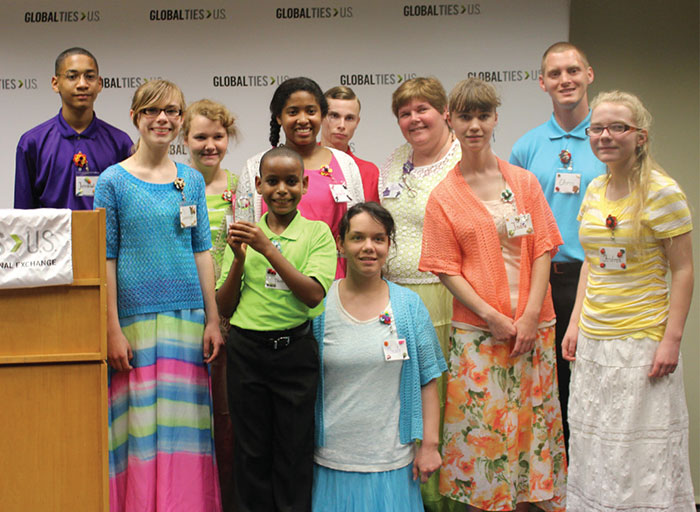
Betty Bledsoe with her family at the 2014 Global Ties National Meeting. Bledsoe was honored with the 2014 Volunteer of the Year Award.
Courtesy of Global Ties U.S.
I am a proud Indianan from DuPont, a small town in my state’s rural south, where my parents owned a grocery store. I have four brothers and sisters. I was born with disabilities and have dealt with physical and medical challenges my whole life. I often have to use my purple wheelchair or purple scooter to get around.
I’d dreamed of being a mother since I was 6 years old—I wanted to adopt 60 children! To date, I have had the privilege and honor to help parent 242 children of all ages! No, that’s not a misprint—you read the number correctly. My life has been blessed, and I am living out all of my dreams. I am also the guardian of six children and foster parent to one. I had two children biologically and adopted 11 more. Twelve still live at home with me full time. All are from the United States, with the exception of one adopted son from Ethiopia. Most of my children came to me with physical, medical, mental and emotional challenges.
The International Visitor Leadership Program has also helped fulfill my dreams. This wonderful endeavor allows my family to know the world without the logistical difficulties of traveling to its four corners. Thanks to the wonderful people we have met through the program, I am able to bring the world to my children.
I homeschool all of my children, and I want them to learn about citizenship and naturalization. My family became involved in the IVLP after attending naturalization ceremonies in and around my hometown, Indianapolis. At one such ceremony, I met two ladies who worked for the Indianapolis International Center. They were the first to tell me about the program and asked whether I’d be interested in hosting dinners. I said, “Sure! I cook for 13 to 15 every day—what’s a few more at a dinner table that has 10 leaves and seats up to 24?!”
And so my family began hosting dinners for the foreign visitors who came to Indianapolis as part of their tour. Without exception, these guests are a tremendous asset, making a huge impact on my family. Each visit is an amazing experience. We have met people from Indonesia, Burma, Saudi Arabia, Japan, Pakistan, Vietnam, Australia, China, Korea, Sweden, Iceland, France, Zambia, Austria, Russia, Cuba, Mexico, Spain, Brazil and the United Kingdom, among other countries!
My children interact with the guests, learning where they are from and what they do. They watched the blind deputy mayor of Paris serving food; they taught our guests from Africa how to bowl, played soccer with two visitors from Brazil in our backyard and rode mini-scooters around our playroom with guests from China.
My autistic daughter makes handmade wash cloths for the guests to take home as gifts. Another similarly-affected child makes presents of her pictures for our guests. My sons enjoy trading U.S. coins for foreign currencies. The kids get so excited each time we host. Their world grows as they meet people, and simultaneously shrinks as they develop international friendships.
Entertaining 13 male visitors from Saudi Arabia was one of our most memorable experiences. They had three interpreters and a liaison, and wouldn’t make eye contact with us at first. I realized this was culture at play, of course, and did my best to be patient and not offend them by serving pork, for example. And as time passed, they began asking questions and engaging us. They even served the food and cleaned up, something they admitted they had never done in their lives!
We get phone calls, letters and cards from the guests we have hosted over the years. We really love the time we have with each of our guests, whether we bring them to the local bowling alley, sit around the living room singing “Amazing Grace,” watch a Pacers game or visit the canal in the center of Indianapolis.
The IVLP is great for the United States. By participating, we see how people can communicate with one another while discovering the similarities between cultures.
My visitors often ask why I adopt and take in so many children. “I’m blessed” is my response. Though my life has its challenges, I have an amazing “village,” despite being a single mother of many. I am particularly grateful for the expanded horizons the program has brought to my family. We can all make a difference, one person at a time.
Sometimes It Is the Small Things That Count
BY KYLE MOYER
I had a strong interest in politics, public policy and international relations from a young age. As an undergraduate, I did an internship with the Arizona Council for International Visitors (now Global Ties Arizona) managing programming for visitors traveling to Arizona under the auspices of the State Department’s International Visitor Leadership Program—and it changed my life. I loved the work, which opened countless doors professionally. I had the opportunity to gain access to virtually every political leader, public policy professional and community stakeholder—connections that I would have never been able to make on my own.
Through this networking, I sought and obtained entry-level positions with dozens of campaigns. I was fortunate to be granted an interview with our governor, who was seeking reelection at the time. I was nervous. She asked if I was “the young man who brought the delegation from Poland to see me last year?” That one simple question precipitated a 45-minute conversation on international exchanges, citizen diplomacy and foreign policy. Instead of discussing political campaign strategy or my minimal qualifications for a position with her campaign, I could discuss the IVLP!
At the conclusion of our discussion, the governor stood and thanked me for joining her, but mentioned nothing about a job. I politely said, “But Governor, I’m actually here for a job interview.” Without missing a beat, she replied: “You had the job five minutes into our conversation.”
I went on to serve as the governor’s speechwriter, communications director and key strategist. Over the past 12 years, I have owned a respected political consulting and government relations practice, and I remain involved in the International Visitors Leadership Program. I first served as a member of my local international visitor council, and later as board chair. Eventually, I served on the national board of Global Ties U.S., where I recently completed a two-year term as national board chairman.
Without question, my involvement with the program has proven the most rewarding and consequential experience of my professional life.
A Cocoa Tree Grows in Baltimore
BY JANINE BRANCH

Representatives of Taharka Brothers Ice Cream and De La Sol Haiti accept the 2014 Citizen Diplomat award in Baltimore, Maryland.
Courtesy of Global Ties U.S.
The January 2010 earthquake that devastated Haiti’s capital, Port-au-Prince, gravely damaged the country’s already struggling economy, as well. Two years after that catastrophe, U.S. government officials, representatives of nongovernmental organizations and Haitian journalists traveled to Baltimore. There, they met entrepreneurs with experience applying creative solutions to local social problems. The delegation, sponsored by the U.S. State Department’s International Visitor Leadership Program, visited Baltimore with the help of a local nonprofit, the World Trade Center Institute.
The Haitian delegation’s itinerary included a meeting with Taharka Brothers Ice Cream Company, a Baltimore benefit corporation operated by young high school and college-aged African-American men. After two hours of brainstorming on how to create a sustainable future for young people from Haiti and Baltimore, the Haitian visitors and Taharka Brothers agreed to explore a partnership. Their efforts brought them to the door of the De La Sol Haiti cooperative.
Based in Plaisance in northern Haiti, De La Sol Haiti was founded by a visionary mother-and-daughter team from Alabama with an altruistic streak. This NGO has worked with farmers for more than 10 years, exploring vanilla cultivation and developing a cacao business. Beginning in the summer of 2013, 20 to 50 pounds of cocoa per month were shipped from the mountaintops of Plaisance to Taharka in Baltimore, thanks to an agreement born out of this IVLP visit to our city and a lot of innovation and hard work in Haiti.
This unique partnership continues to work out well. Taharka won Baltimore Magazine’s “Best of Baltimore Award” in 2013 for their high-quality ice cream. With enormous effort and perseverance, De La Sol Haiti invested in a cocoa processing facility that grew into a working export service. This facility employs 13 Haitian farmers and is rapidly expanding today. This is significant in a country where unemployment stands at between 80 and 90 percent. These chocolate exports pay for antibiotics and youth education, saving lives. Taharka and De La Sol Haiti jointly won the 2014 Citizen Diplomacy Award from Global Ties U.S.
This agreement also demonstrates how effectively a State Department initiative can collaborate with local community-based organizations like ours. Working together, we grow partnerships across borders, while striving to educate and connect businesses both here and abroad. Small-scale farmers and business people facing tough market conditions are the immediate beneficiaries.
In the end, consumers and would-be entrepreneurs in Baltimore and Plaisance, Haiti—two areas in which first and second chances and opportunities are few—have proof that their prospects can be uplifted in our increasingly globalized world. In fact, they can taste it.
Soft Power Against Apartheid
BY DAN WHITMAN
I had my first International Visitor Leadership Program experience in 1969. At the time, I was a French language interpreter on contract to assist Télésphore Yaguibou, then an IVLP visitor and a mid-level foreign ministry official from Burkina Faso (Upper Volta in those days). One evening that summer, while walking with me across a bridge over Rock Creek Parkway, he announced: “Mon cher Daniel, I would like to come back here one day.” He returned the following year as Upper Volta’s ambassador to the United States.
Over the past 46 years, I have had the pleasure of traveling across the United States more than 50 times with IVLP participants and also worked with them in my role as a Foreign Service officer in the seven countries in which I served.
I believe in the program. For those seeking a reason for its existence, allow me to offer my experience with participants from South Africa during the late 1970s. Profound change was imminent, but few saw it coming. I interpreted for French-speaking African leaders, who were joined by South Africans, during their visit to the United States.
The U.S. embassy in Pretoria was pushing the transformation envelope in those days, though quietly. One of the U.S. government’s principal tactics to fight apartheid at the time was inviting students and professionals from South African’s majority black population to the United States in significant numbers, cracking open the seemingly unshakeable clouded glass ceilings. In doing so, our diplomats outsmarted apartheid every day for about 20 years.
Bringing emerging South African leaders to America involved tact and skill. The apartheid regime worked hard to prevent the travel of the candidates we selected for participation. The regime had an array of tools to prevent this, including exit visa restrictions, harassment and imprisonment. U.S. Information Service staff administering the program nevertheless made travel arrangements, banking on the regime “blinking” rather than risking further international isolation.
Apartheid had a negative effect on all of South Africa’s social and ethnic groups (including its supposed beneficiaries), though some suffered more than others. From my point of view, U.S. soft power diplomacy helped the country in the long term, by empowering future leaders and tempering the perceptions of its past and present. When change took root in South Africa, especially after Nelson Mandela’s release from prison in 1990, cadres had already been formed and were ready to take up the political, economic and social direction of the country.
My South Africa experience led me to write Outsmarting Apartheid (2014), which offers 40 first-hand accounts from beneficiaries and administrators of IVLP. Their stories continue to inspire me, now as then, in the same way the invitees were moved to do great things upon visiting the United States for the first time.
Building Support for Mental Health Care in South Africa
BY GITA HARIE
It may be my imagination, but when I meet people abroad, and I tell them I’m from South Africa, I feel they see me as an unofficial representative of the “rainbow nation.” World opinion associates my country with the peaceful transition from apartheid, a successful World Cup soccer tournament in 2010 and, of course, Nelson Mandela.
Still, while South Africa has seen profound and positive change over the past three decades, all of us accept that we have a long way to go. I see the challenges every day in my job as executive director of Durban and Coastal Mental Health, my country’s largest mental health organization. We have 25 projects underway: seven residential care centers, eight protective training workshops, eight day care centers and two social work regions. During the last fiscal year we had 56,021 clients.
I’m very grateful to the managers of the fantastic International Visitor Leadership Program for helping me confront my challenges head-on. My participation in the program contributed tremendously to my professional and personal development, inspiring and motivating me to direct mental health services in South Africa to greater heights.
I can trace a lot of what I have accomplished to my experience in 1998, the year I visited the United States. I met a lot of first-rate practitioners during my visit. On return, I initiated the Service User Empowerment Program, which Durban and Coastal Mental Health uses to empower its clients with self-advocacy skills. I also began a jobs training program for individuals with mental health issues. Finally, I committed my organization to entrench itself in rural South Africa, an area long in need of mental health support.
Earlier this year, the IVLP invited me back to the United States as a Gold Star alumna to discuss what I had achieved since my first visit 17 years ago. I visited six American states, holding symposia with policymakers, students, mental health practitioners, academics and patients. I also had the privilege of meeting volunteers and “typical” U.S. citizens. Families invited me for dinner, including one that gave me four days of “home hospitality” in Montana.
I’ve learned a lot about America, its families and its approach to mental health. Obtaining outside perspectives on one’s chosen course of study is invaluable and serves as a counterweight to the tendency to resist change. I am continuing to analyze what I’ve experienced, with the goal of determining how my practice can adapt America’s best practices models.
I also gained a perspective on the United States that differed markedly from the way the country is often portrayed in films and other media. Aside from the hospitality and the profound professional experiences I had in America, I learned that yours is a “rainbow country,” too.
Not Everyone Needs to Win a Nobel Prize
BY MARILYN SAKS-MCMILLION
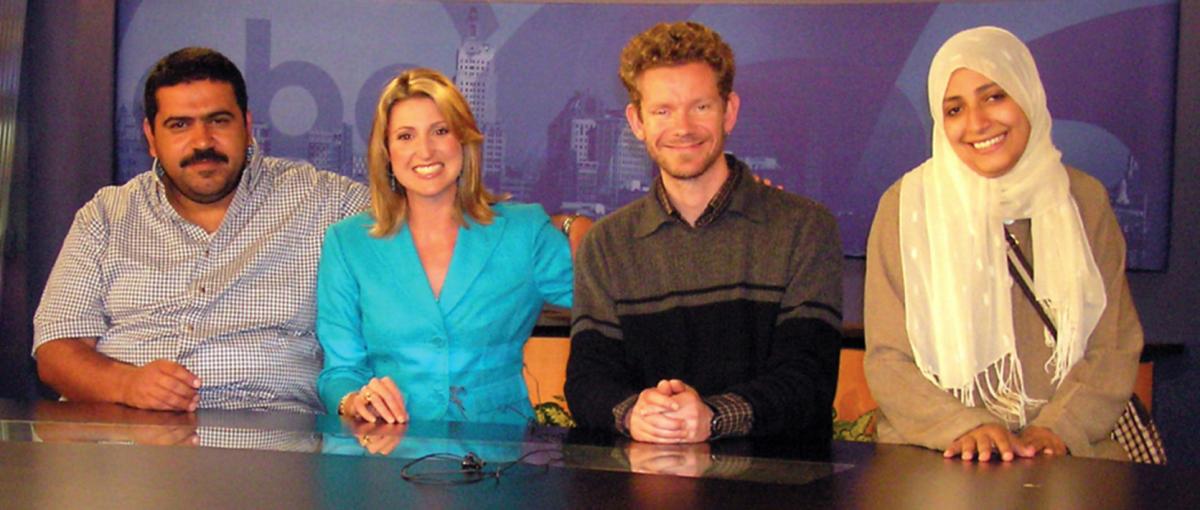
2011 Nobel Peace Prize Winner Tawakkol Karman (far right) with fellow IVLP participants during a 2005 visit to the ABC News affiliate in Providence, Rhode Island.
Kate Greene / Courtesy of Global Ties U.S.
I’ve met many hundreds of International Visitor Leadership Program participants over the past 19 years. I started with Delphi International and remained with the organization after it merged with World Learning, a programming agency that handles several hundred participants each year.
We can never predict how a U.S. experience will affect our invitees. But I trust they will be transformed and do good work once they return home. For example, I remember a quiet judge from Moldova, who was serving on its Higher Judicial Chamber when he visited the United States on a program that highlighted anti-corruption and our justice system. Today, he’s president of his country.
Not every participant has to be a would-be chief of state, of course. Once I programmed a group focused on ways to prevent domestic violence. As part of the tour, we visited a battered women’s shelter in Washington, D.C. Though not well off by any means, the visitors were so moved by the shelter’s professionals that they spontaneously donated more than $100 to the staff.
I was particularly impressed by a Cameroonian journalist. With my encouragement, he applied for and obtained a World Learning leadership grant to gain mentorship and funds for a social enterprise. Now he has his own news site, which combats myths and ignorance about science and health issues across Africa, and has won prestigious awards from the International Center for Journalists.
When I’m asked about the impact of the IVLP, I also think of Nobel Laureate Tawakkol Karman of Yemen. A journalist for Yemen’s National Organization for Defending Rights and Freedoms, while also serving as its executive manager, she participated in a program on investigative journalism in 2005.
One of 25 journalists for whom I was responsible, Tawakkol came to the United States hoping to learn about our politics and obtain skills she could use in her work.
I remember encouraging these reporters to “look behind the curtain” and discover the diversity of the United States and its decentralized political system. Asking questions is very important, I told them, adding that the only “bad questions” are those not asked.
The program encompassed six cities, and allowed the group to see America as a vibrant democracy of many voices. One of the group’s translators told me Tawakkol expected to be treated differently because she wore a headscarf, but was pleasantly surprised not to encounter any negativity on that account.
Our visitors were also surprised by the rights journalists enjoy. Foreign media often cover a fictional America that speaks with one voice, and the degree of public debate they found here was unexpected. Travel to small media markets was particularly enlightening, and everyone expressed pleasure with their experience at the University of Missouri’s School of Journalism. I believe that the openness, friendliness and eagerness to share, which the group experienced during their visit, helped them to put aside preconceived notions and misperceptions.
Tawakkol reached the international stage a few years ago, earning the title “the Mother of the Revolution in Yemen.” The Nobel Peace Prize committee gave her the award in 2011. As luck would have it, I met her again in September 2014, with her husband in tow, at a presentation she gave at the U.S. Institute of Peace. With a warm embrace, Tawakkol called me her “teacher” and said her IVLP trip was an experience she remembered in her head and heart.
I was humbled, and never felt a greater sense of accomplishment, knowing the visit had sparked something inside her.
Kindness and Assistive Technology from Utah
BY ALICE WILLIAMS
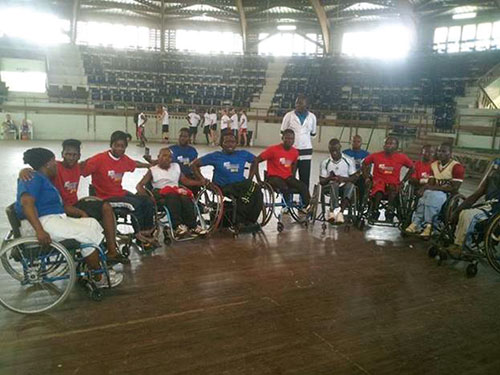
Abdel Ouorou Bare’s Beninese basketball team participated in a tournament for wheelchair-bound players.
Courtesy of Alice Williams
As the Utah Council for Citizen Diplomacy’s marketing and communications coordinator, I’ve had the pleasure of meeting a range of inspiring and passionate individuals who visit our state through the International Visitor Leadership Program and commit to do positive work on their return home. I am touched by each and every participant with whom we work. It’s a privilege to host them. Allow me to share the story of an act of generosity that fully defines the term “citizen diplomacy.”
In July, the Utah Council for Citizen Diplomacy hosted a group of IVLP participants from many different African countries for a program, “Disability Issues in the United States.” The program was designed to acquaint participants with the policies, best practices and challenges involved in improving access, opportunities and quality of life for individuals with disabilities. All participants were advocates for the rights of the disabled. Most struggled with a disability themselves or had a similarly challenged close family member.
Their visit to Utah was life-changing.
We arranged a lot of meetings with peer organizations for our visitors, but the one to the Utah Center for Assistive Technology stood out. That organization helps people without the means to afford assistive technology, and designs smart and practical tools for people with disabilities. Many African countries cannot obtain the technology-dependent tools that are common in the United States, which support improved access for people with disabilities.
After the meeting, Utah Center staff presented two wheelchairs to Abdel Ouorou Bare for his Beninese basketball team; a tune-up for the wheelchair of Burkina Faso’s Ismael Traore; and an electric wheelchair, new wheels and a modified wheelchair for Senegal’s Sanghone Diop.
As our African visitors’ guide would tell us later, “they had never experienced this sort of kindness on the part of strangers. They will not forget this experience, ever.”
Abdel and his basketball team went on to participate in a basketball tournament for wheelchair-bound players, sponsored by the U.S. embassy in Benin. These extraordinary gifts could never have been bestowed without the valuable work of the IVLP, which regularly changes the lives of people from around the world.
Museum Management Lessons
BY IVAN STANIC
In April 2007, I participated in the International Visitor Leadership Program titled “Cultural, Performing and Visual Arts Management in the United States” at the invitation of the U.S. embassy in Belgrade.
My visit to America was a unique opportunity to study new methods and models of cultural management, aesthetics and life. I greatly benefited from the experience, which broadened my interests, changed my way of thinking and radically influenced my work. In a number of fields, American cultural and artistic practices are useful and adaptable outside your country. And, perhaps more importantly, my visit to America changed the way I think about the United States—for the better!
I launched Belgrade’s “Night of Museums” by collaborating with a group of young, enthusiastic local artists. Our work began the year before I embarked on my visit to the United States, but the experience I gained in the United States allowed me to improve this project. Eight years later, I still use what I learned to aid me in my work at Belgrade’s Museum of Science and Technology.
Our visits to Washington, D.C., Buffalo, Rochester, Seattle, Austin and New York City were all invaluable. They gave me insights into how your key institutions work, including the Smithsonian Institution, the Kennedy Center for the Performing Arts, the Experience Music Project, the Seattle Art Museum and the George Eastman House, among others. Our American counterparts were forthcoming, welcoming and eager to share their experiences and knowledge.
Acquainting oneself with different practices, ways of doing business and application of knowledge, and establishing contacts with counterparts from American cultural institutions are critical to making international exchanges work.
In 2009, I organized a workshop titled “Museums Today: Changes and Continuity.” Thanks to the IVLP, two key figures came to Belgrade to participate: Brent Glass, the former director of the Smithsonian National Museum of American History, and Mintz Ward, the executive director of the Coby Foundation. The two conducted a workshop for Serbian museum managers that the U.S. embassy, the Fund for Arts and Culture in Central Europe and the Serbian Ministry of Culture jointly supported.
Even today, six years later, my Serbian counterparts tell me the workshop was “one of the most useful seminars in which they had the pleasure to take part.”
Starting Up Exchanges with Iraq in the 1980s
BY JAMES BULLOCK
In 1984, I was all set to work in our embassy in Riyadh, when I was asked at the last minute to take on a higher-priority assignment instead: reopen the U.S. Information Agency’s operation in Baghdad, in anticipation of the imminent restoration of diplomatic relations between Iraq and the United States. Although the political stakes were high, expectations were low. Saddam Hussein’s police state was in tight control of anything foreign and ever watchful for enemies while fighting a desperate war against Iran. No one expected successful public diplomacy in that environment. As a result, I had a free hand to do what I could.
Despite having had a small U.S. interests section in Baghdad since the early 1970s, earlier attempts to relaunch an International Visitor Leadership Program exchange in Iraq hadn’t gone well. No Iraqi could afford the risk of being selected by the embassy for a trip that could be seen as a reward for something—the Iraqi government wanted to control selection to all largesse. USIA headquarters, however, had a long-standing rule: only embassy officers could nominate candidates for the program. We eventually managed to put together a successful workaround with a bit of good luck and some creative bending of the rules.
First, USIA sent us one of the first Arabic-capable personal computers available, which we used to prepare letter-perfect Arabic-language correspondence quickly, freeing up staff time. This was crucial, because all substantive communications between the embassy and the Iraqi government had to be transmitted through formal diplomatic notes.
The procedures for issuing exchange visas were much simpler in those days, as well. I kept the forms in my office and could assemble the entire application package in under an hour. Our consular colleagues gave us head-of-line privileges for exchange visas. But identifying good exchange candidates remained our big problem. Most Iraqis were still loath to have any contact with us.
Identifying good exchange candidates remained our big problem. Most Iraqis were still loath to have any contact with us.
Here’s how we solved it: We compared USIA’s group program offerings with embassy priorities (identifying candidates for individual travel would have been too much), putting together a tentative plan for our ambassador to approve. Next, I would “socialize” the plan with our police contact, agreeing to solicit nominations from the Iraqi government via a diplomatic note, in exchange for a commitment to respect our selection criteria. We prepared a separate and detailed diplomatic note for each U.S. thematically organized group into which we sought to add an Iraqi participant, describing in detail what kind of individual was being sought “to represent Iraq.” Finally, we gave copies of the notes to our police contact, and waited.
Back in Washington, USIA’s visitor program managers agreed to this highly unusual procedure and asked only that we verify candidates’ bona fides, which we were generally able to do because the Iraqis honored their commitment to send us only highly qualified nominees.
Time was our remaining challenge. Would-be Iraqi visitors could not contact us until they had completed a police-managed “orientation” program detailing what was expected of them during their visit to the United States. Our exchange programs had fixed schedules involving participants from many other countries. Typically, the Iraqi invitees would arrive at the embassy, without warning, on the very last day we could still get them onto a flight to Washington in time for the start of the program.
We had just hours to do everything: obtain personal data on a visitor (who technically hadn’t yet been approved by USIA headquarters), explain the program, verify credentials and get all of this into an immediate telegram to USIA. Once the cable was on its way, we prepared a comprehensive visa application package; escorted the candidate to the consular interview; purchased a round-trip air ticket; and issued travel funds. All of this was done by one junior USIA officer (me) and a very hard-working Iraqi staff assistant. A month or so later, when the visitor returned from the United States, we were allowed a single debrief to discuss what impact the program had made. Ongoing relationships between returning visitors and the embassy, an expected result of exchanges elsewhere, were discouraged by the Iraqi government.
Was all this effort worth it? Absolutely! Did we hurt the program by bending the nomination rules? I don’t think so. Iraq sent us top-quality participants to whom we would otherwise have had no access at all. The IVLP consistently made positive impressions on a broad spectrum of that country’s professionals following a long period (1968-1984) when there had been practically no U.S. presence in Iraq at all. Ours was a unique response to a unique challenge.
Read More...
- The IVLP: Offering International Visitors the Change to See the Real America (The Public Diplomacy Council, May 2011)
- IVLP Stories (Bureau of Education and Cultural Affairs)
- International Exchange Alumni Stories (Bureau of Educational and Cultural Affairs)
- Notable Visitors (Meridian International Center Professional Exchanges Division)



